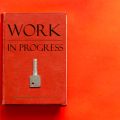1. Introduction: Setting the Tone
When crafting a cover letter for the American job market, your introduction is more than just a formality—it’s your first and best opportunity to make a memorable impression. American employers expect candidates to open with a paragraph that is both engaging and concise, immediately demonstrating why you’re worth their time. This crucial opening should quickly capture attention by highlighting not only who you are but also why you’re excited about the role and how your background aligns with the company’s values or needs. Striking the right balance between professionalism and personality sets a positive tone for the rest of your letter. Remember, American hiring managers often sift through dozens—if not hundreds—of applications, so a strong, personable introduction helps you stand out from the crowd and invites the reader to learn more about you.
2. Formatting Essentials: The American Standard
When applying for jobs in the United States, the formatting of your cover letter is just as important as its content. American employers are accustomed to a clean, professional presentation that quickly communicates your attention to detail and understanding of business norms. Here’s a breakdown of the key formatting elements that will help your cover letter stand out for all the right reasons.
Key Formatting Details
| Element | American Standard | Tips |
|---|---|---|
| Margins | 1 inch on all sides | Keeps your document neat and prevents overcrowding |
| Font | Times New Roman, Arial, or Calibri (10-12 pt) | Choose a professional, easy-to-read typeface |
| Spacing | Single-spaced within paragraphs; double space between paragraphs | Makes your letter easier to read and visually appealing |
| Alignment | Left-aligned (no justified text) | Standard for most business correspondence in the U.S. |
| Length | No more than one page (3-4 paragraphs) | Keeps your message concise and focused |
| File Format | PDF unless otherwise specified by employer | Ensures consistent formatting across devices and platforms |
Layout Preferences: A Clean Professional Look
A typical American cover letter starts with your contact information at the top, followed by the date and the employer’s details. Use clear section breaks for your introduction, body, and closing. Avoid unnecessary graphics or colors—simplicity is key. Consistent formatting throughout your application materials signals professionalism and reliability.
The Takeaway:
If you want to make a strong first impression, start with the basics: clean margins, classic fonts, proper spacing, and a well-organized structure. These small details show hiring managers that you understand—and respect—the expectations of American workplaces.
![]()
3. Structuring Your Cover Letter: Paragraph by Paragraph
When crafting a professional cover letter for the American job market, structure is just as important as content. Employers expect a clear, logical flow that makes your application easy to read and compelling. Let’s break down the ideal order and what to include in each section:
Introduction: Grabbing Their Attention
Your opening paragraph should immediately state the position you’re applying for and how you learned about it. American employers appreciate directness and clarity. Briefly introduce yourself and give a hint of why you’re a great fit—this is your opportunity to hook the reader’s interest.
Tip:
Mention a connection if you have one (such as a referral or meeting at a career fair), but keep it concise and professional.
Body: Making Your Case
The body is typically one or two paragraphs where you expand on your qualifications. Highlight specific experiences and skills that align directly with the job description. American employers value results-oriented language, so use quantifiable achievements when possible (e.g., “increased sales by 20%,” “managed a team of 10”). Show not just what you’ve done, but how those experiences make you an asset to their company.
Tip:
Avoid repeating your resume. Instead, provide context, explain your motivation, and demonstrate how your background matches the company’s needs.
Closing: Ending with Confidence
Your closing paragraph should reinforce your enthusiasm for the role and express appreciation for the employer’s consideration. Clearly state that you look forward to the possibility of discussing your application in more detail—American employers expect this proactive approach. Include your contact information if it’s not already present elsewhere.
Tip:
Keep it positive and confident, but avoid sounding presumptuous. A simple “I look forward to hearing from you” or “Thank you for your time and consideration” works well.
By following this straightforward structure, you’ll ensure your cover letter meets American employers’ expectations for professionalism and clarity, making it easier for hiring managers to see why you’re the right choice for their team.
4. Tailoring Content to the Job and Company
One of the most critical aspects of crafting a successful cover letter in the American job market is customization. Generic cover letters often get overlooked, while tailored ones demonstrate genuine interest and effort. This means your cover letter should directly address the specific requirements of the position and reflect an understanding of the company’s culture.
Why Customization Matters
American employers value applicants who take the time to personalize their applications. When you tailor your content, you show that you’ve researched both the role and the organization. This not only highlights your qualifications but also signals your enthusiasm for joining their team. Below is a quick comparison between generic and tailored cover letters:
| Generic Cover Letter | Tailored Cover Letter | |
|---|---|---|
| Tone & Content | Broad statements, little connection to job specifics | Directly addresses job description and company values |
| Impact | Low engagement from employers | Higher likelihood of interview invitation |
| Perceived Effort | Minimal effort shown | Clear research and preparation demonstrated |
How to Effectively Tailor Your Cover Letter
1. Match Your Skills to the Job Description
Carefully review the job posting for key skills and responsibilities. Address these directly in your cover letter by giving concrete examples of how your experience aligns with what they’re seeking.
2. Reflect the Company Culture
Research the company’s mission, values, and work environment—often found on their website or social media channels. Use language and tone that mirror their culture, whether it’s innovative, collaborative, or customer-focused.
Example Phrases for Tailoring:
- If applying to a tech startup: “I thrive in fast-paced, innovative environments where creative problem-solving is valued.”
- If applying to a non-profit: “Your commitment to community impact resonates with my passion for meaningful work.”
- If applying to a corporate firm: “My experience managing cross-functional teams will contribute to your focus on efficiency and results.”
Final Thoughts on Personalization
A well-tailored cover letter helps you stand out by making it clear why you are uniquely qualified—not just for any job, but for this particular role at this particular company. Always remember: quality over quantity when it comes to job applications in the U.S.
5. American Communication Styles: Clarity, Conciseness, and Confidence
When crafting a professional cover letter for the U.S. job market, understanding and adopting the preferred American communication style is key to making a strong impression. American employers highly value candidates who can communicate their ideas clearly, concisely, and confidently—qualities that reflect not only professionalism but also respect for the reader’s time.
Directness with Politeness
U.S. employers appreciate direct communication that gets straight to the point without unnecessary fluff or ambiguity. However, directness should always be balanced with politeness. This means stating your intentions and qualifications in a straightforward way while still using courteous language such as “Thank you for considering my application” or “I would welcome the opportunity to discuss my fit for your team.”
Conciseness Is Key
Avoid lengthy explanations or overly detailed stories in your cover letter. Instead, focus on summarizing your key skills and experiences that are most relevant to the position. Using short paragraphs and bullet points (when appropriate) helps keep your message easy to read and digest. Remember, busy hiring managers prefer cover letters that deliver maximum impact with minimal words.
Confidence without Arrogance
American employers look for candidates who express confidence in their abilities but avoid coming across as boastful or arrogant. Use strong, positive language like “I am confident I can contribute to your team” rather than tentative phrases like “I think I might be able to help.” At the same time, stay humble by acknowledging the value you place on learning from new experiences.
By emphasizing clarity, conciseness, and confidence—while maintaining a balance between being direct and polite—you will align your cover letter with what American employers expect. This approach demonstrates not only your professionalism but also your understanding of U.S. workplace culture.
6. Closing with Impact: Call to Action and Professional Sign-Off
As you wrap up your cover letter, your closing paragraph is your final opportunity to make a memorable impression on American employers. This is the place to reiterate your enthusiasm for the position, reinforce your suitability, and invite further communication. Begin by clearly stating your excitement about the role and the company. For example, “I am genuinely excited about the opportunity to contribute to [Company Name] as [Position Title] and look forward to potentially joining your team.”
Next, include a specific call to action that encourages follow-up. Instead of passively ending with “Thank you for your time,” show initiative by writing something like, “I welcome the chance to discuss how my skills align with your needs in more detail.” This demonstrates both confidence and eagerness.
When it comes to signing off, American business culture values professionalism combined with a touch of warmth. Popular closings include “Sincerely,” “Best regards,” or “Kind regards,” followed by your full name. Avoid overly casual phrases such as “Cheers” or “Take care,” as these may not align with U.S. professional norms. If submitting electronically, it’s also common practice to include your contact information beneath your signature block.
A strong conclusion leaves hiring managers with a positive impression and a clear next step, setting you apart from other candidates. By expressing genuine interest and using an appropriate American-style sign-off, you signal both professionalism and a proactive attitude—qualities highly valued by employers in the United States.


